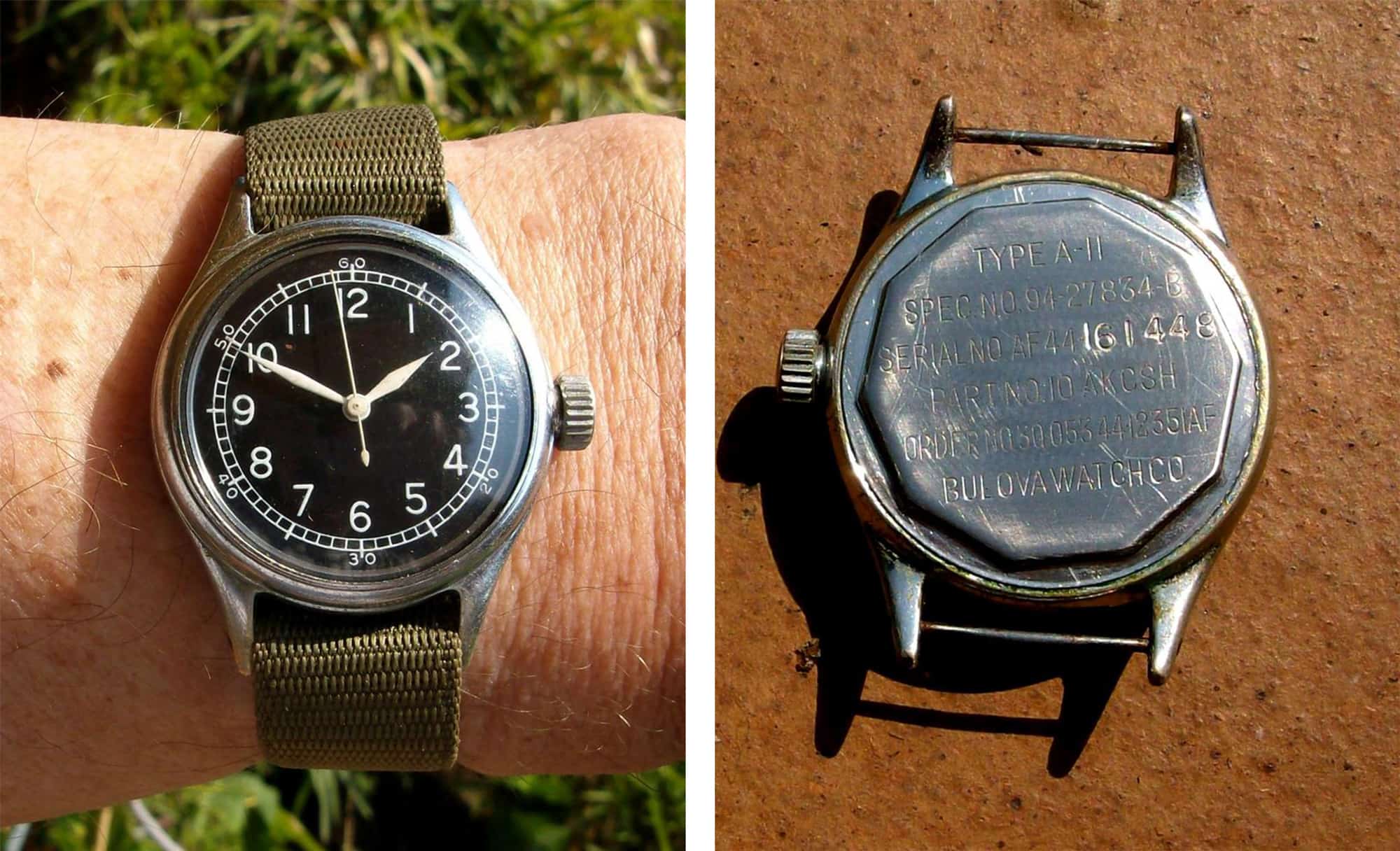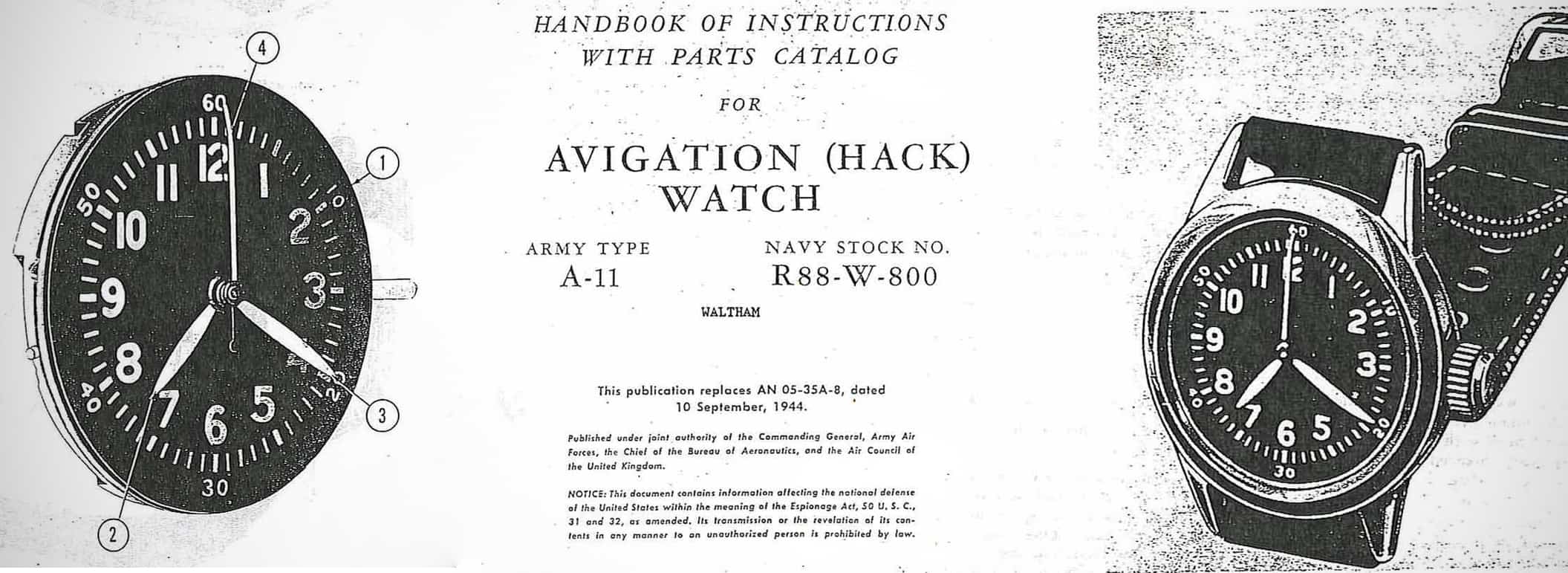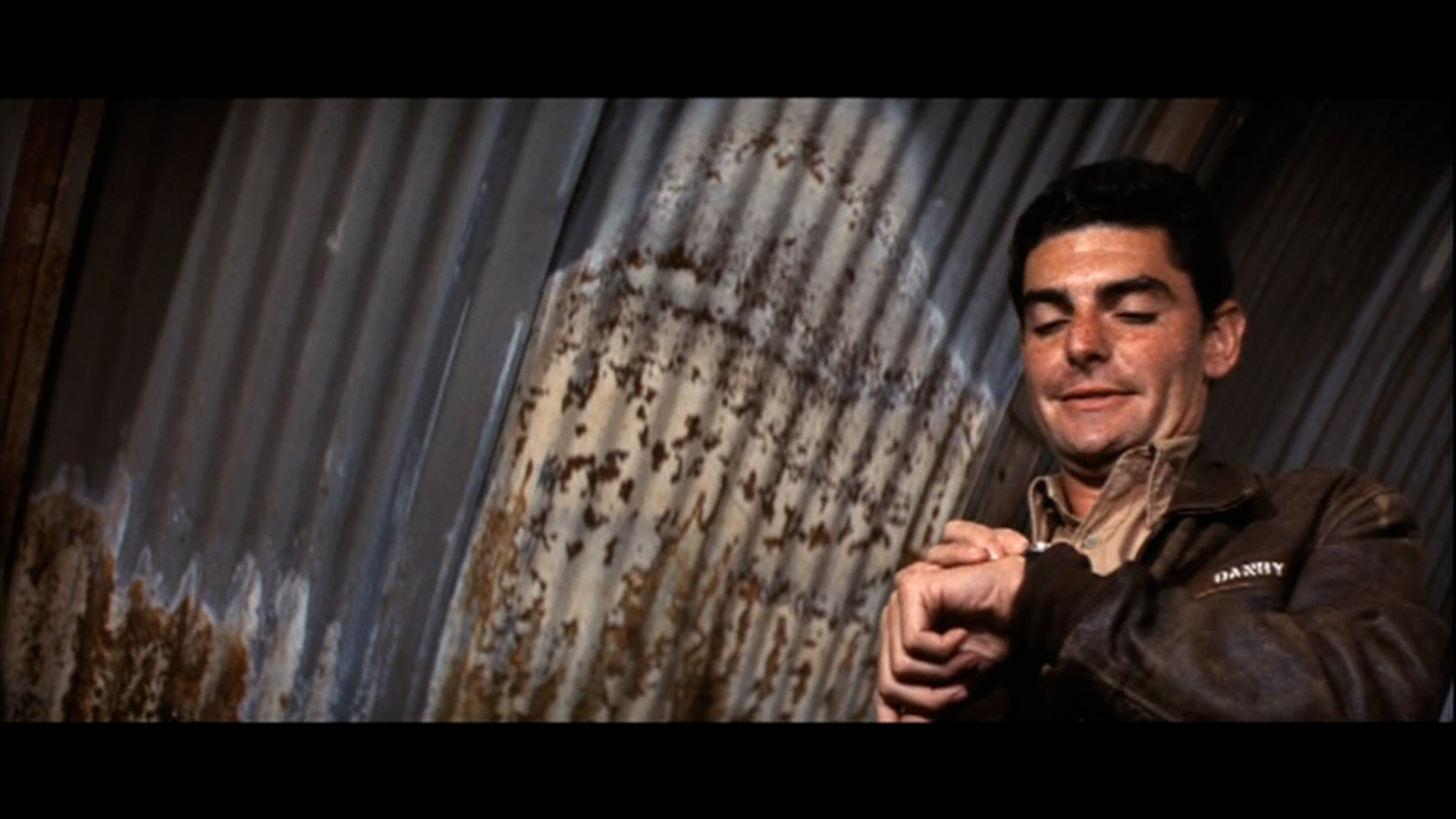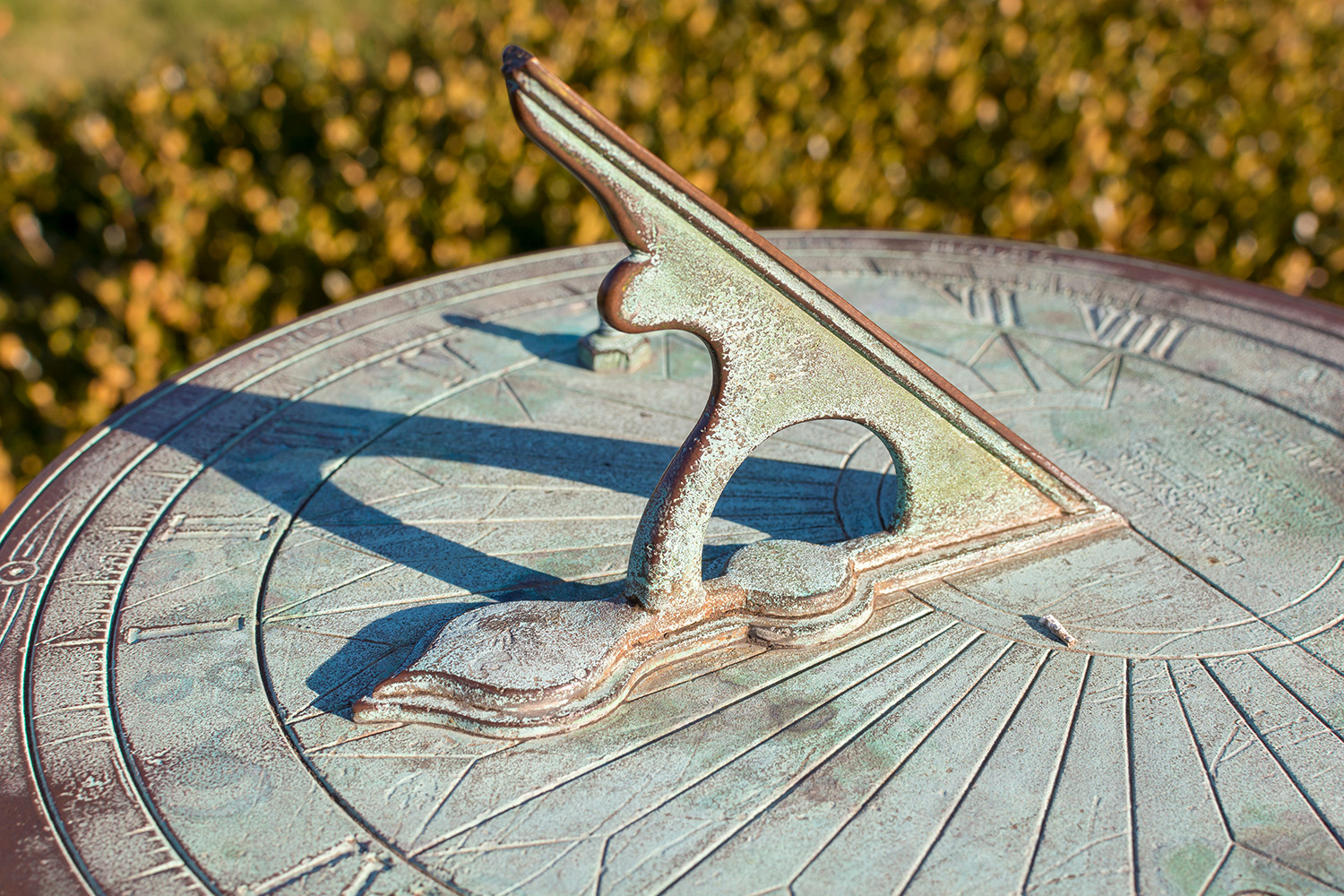On January 2, 1979, I was issued my first (and only) Air Force time piece which was a part of a very fine military history. The next day I was introduced to a mania of timing precision that has in varying degrees been with me ever since. It has taken over forty years for me to free myself from it.
— James Albright

Updated:
2023-08-01
There were almost eighty of us, standing in line, getting handed our flight gear from about ten airmen each with a pile of stuff and a list of names to check off. "Name?" "Lieutenant Albright." The airman would size me up and hand over three flight suits. "Name?" and so it would go. At one station an airman had a large box of watches. I didn't know at the time but we were being handed a part of history, the same watch used by the U.S. military in World War II, the Bulova A-11 "Hack" watch.
In 1979, the watch we were handed was inferior in every way to the Seiko I had on my wrist at the time. I wore the A-11 thinking I would spare my personal watch from any potential damage while around aircraft. In a bit of an irony, we never again used this watch during pilot training for anything more than telling the time. But our first classroom instructor had a more profound impact on me than a mechanical time piece.
Our class of 77 was divided into two flights, I was a part of "No Loss" flight. There were 38 of us on that first day of class. Despite the name, No Loss flight suffered many losses in the months to come, but on day one, there were 38 of us at our seats listening to our first instructor pilot. Captain Chrono (not his real name) was the epitome of what I had envisioned an Air Force instructor pilot to be. He was tall, a full head of dark black hair cut to within a millimeter of Air Force Regulation 35-10 standards, and he spoke with a self-assured confidence that told us second lieutenants that here was a pilot who knew what it was all about.
Captain Chrono looked at his watch. "Gentlemen, it is now precisely zero eight zero five. We will go over the agenda for the next month of academics. At zero eight fifty, we will have our first break of the day. At precisely zero nine zero zero, we will begin block one of . . ."
And he went on to cover the rest of the day. "This is the precision you must conduct yourself from this day forward."
At our break, lined up at the urinals, one of my classmates looked at his watch and said, "At zero eight fifty-seven I shall commence the urine release procedure. At zero eight fifty-eight, I will . . ."
As this wit realized immediately and I eventually figured out, Captain Chrono was more bluster than precision. But still it had an impact on me. For the next year, I started each day at zero five zero zero, and scheduled the day to come. That habit continued for the next forty years. Of course I wasn't measuring time to the second, but that precision would come in about a year.
My first "time hack"
A year later I was in a large briefing room where half of us were flying KC-135A tankers and the other half were in B-52G bombers. We would takeoff, fly navigation legs of two hours to give our navigators the training of keeping us on course using the stars, and then we would rendezvous with the other aircraft for air refueling. The "time hack" became important.
The time hack process took as much as two minutes. The person leading the process would announce the time hack, which would be for at least two minutes in the future. The extra minute gave enough time for anyone whose watch second hand was already past the 60 / 0 position. "Time hack will be for fifteen ten," the briefer could say. If, for example, your watch second hand was pointing at the five second mark, you would wait until it was pointing straight up, pull out the winding stem, and freeze the second hand. Then you would turn the stem until the hour pointer was at the 3 and the minute pointer was at the ten minute mark. Ten seconds before the announced time, the briefer would count down from ten. ". . . three, two, one, hack. Time is fifteen ten." Everyone would hit their stems at the "hack." It didn't matter if the briefer's time was accurate. What mattered was that everyone had the same time.
As civilians, one of our rituals prior to flying oceanic was getting a time hack from HF radio. (How? See: HF / Time Hack.) Of course all this went out the window with GPS. Many watches hack themselves to GPS, as do our computers, clocks, and even our microwaves. After twenty years, however, I still carried the need for precise timing with me. I think this was common to more than just military pilots, but to all pilots who fly oceanic.
"Standby"
The A-11 stopped working one day, years after my last to-the-second time hack. It ended up in a sock drawer and one or two moves later, it disappeared. I replaced it with a Seiko Chronograph which provided a basic CR-60 "whiz wheel," and that stays with me to this day. But I don't remember the last time I ever used the whiz wheel. Two years ago I noticed the whiz wheel would no longer rotate. I took it to a jeweler and now it is as good as new. And in the two years since, I still haven't used the whiz wheel.
My Air Force aviator concept of time followed me into civilian life and I was unaware of anyone noticing it until one day the phone rang, I answered, and put the phone down to find my wife. She picked up the phone and started laughing. "Yes, that's him exactly."
When she finished her phone call, I asked what they were laughing about. She told me that after she said hello, her friend said, "this is me standing by." She explained that I would routinely tell her friends to "stand by" when I put the phone down. It took me about a year to break that habit.
Learning to be more time casual
I used to plan all family events with the precision of a four-ship aerial attack behind enemy lines, only to become agitated when the rest of the family responded with the accuracy of a paper calendar. Over the years I've learned to relax this, but still I would find myself in the car at the precise zero-hour while some of the family were still getting dressed. (Once I found someone still asleep in bed.)
About a year ago — coincidently about the time I retired — I decided I would no longer stress about time. My only concession is that I will announce a departure time with fifteen minutes to go, I will be ready at that time, and then I'll pull up a good book or my laptop. We are, more often than not, late. But a curious thing has happened. We are late less and less often, through no effort of mine. Perhaps there is a deeper lesson here for me.





